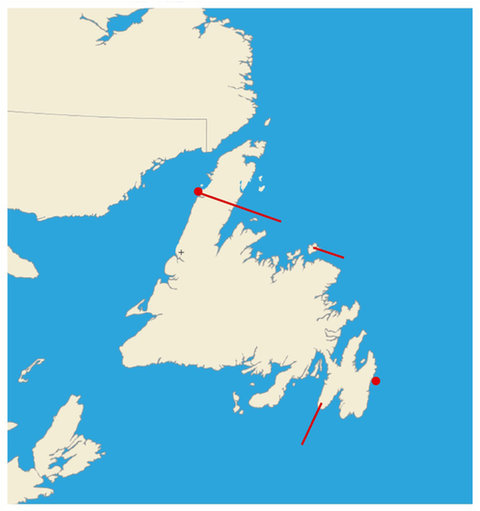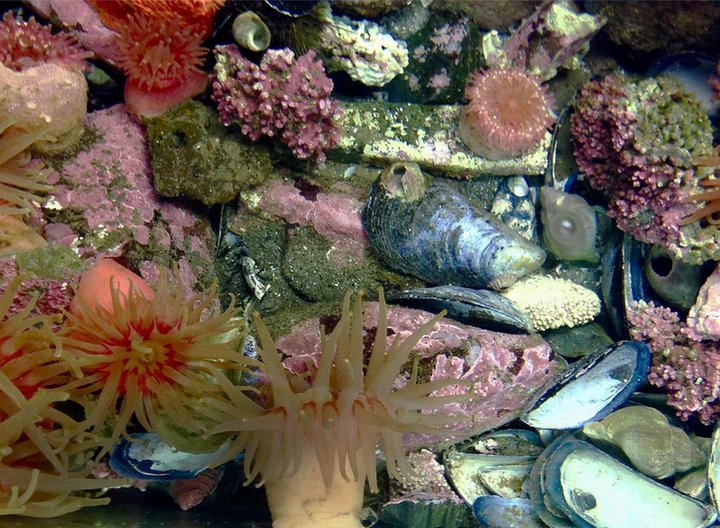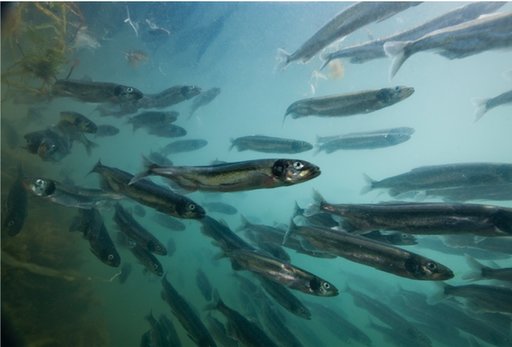
Labrador
Québec
Atlantic
Ocean
Newfoundland
GrosMorneMountain
Port au Choix
Fogo Island
Gull Island
Cape St. Mary's
100 kilometers
100 miles

North
America
Let’sgetonething straight:
Iknowthatcariboudonotliveintheocean.Asamarinebiologist,Istudyoceananimals.IliveonanislandcalledNewfoundlandineasternCanada.It’spartoftheprovinceofNewfoundlandandLabrador.MyresearchtakesplaceintheNorthAtlanticOcean.Ofcourse,therearenocariboufloatingintheocean.But,IcanexplainwhyI’mtalkingaboutcaribou.Here’swhathappened.IwasvisitingthehistoricPortau Choix lighthouse.
Theviewoftheoceanwasincredible.AsIwalkedaroundthelighthouse,Inearlyranintoasmallherdofcaribou!Theywerecalmlygrazingonthelighthouse grounds.
I’mnotembarrassedtoadmitit.Igeekedout.Caribouarehardtoseeinthewild.Theyavoidpeople.Toseesomanyofthematoncewasabig deal.
TherewasnowayIwasgoingtomissthis.Idroppedtothegroundinfrontofthelighthouse.Iinchedforwardonmystomach.Myheartwasracing.IfumbledformycameraandtookasmanyphotosasIcould.Soon,thecaribougotwisetomeandmoved off.
Yes,I’mamarinebiologist.Butonthisisland,Igettoseehowlotsofamazinganimalsinteractwiththesea,sky,andland.Letmetellyouaboutafewof them.
TheSea
It’stheseacreaturesthatIknowthebest.TheNorthAtlanticisverycold,anditswaterscangetrough.Yet,manyanimalscallthesewaters home.
Seaanemonesliveontheseafloor.Theseinvertebrateshavesquishybodies.Theycanbeassmallasabuttonorbigasateacup.Theycementthemselvestorockstostayinplacedespitethewaves.Theirlongtentaclesstingandgrabpreythatgettoo close.

ThewatersaroundNewfoundlandarefullofanemonesandother life.

capelin
SeaSnacks
Whiletheanemonesholdfasttorocks,tiny,shimmeringfishflitabout.Theyarecapelin.ThesefishcometothecoastsofNewfoundlandbythemillions.Here,theyputonashow.Thousandsofthem“jump”ontotherockybeachestolaytheir eggs.
Manyotherspeciesfindcapelindelicious.Humpbackwhalesarebigfans.TheytraveltoNewfoundlandonsummervacations.Foodisplentifulhere.Theyeatalotsotheygainandstorehealthyfat(blubber)duringtheirvacationin Newfoundland.
Thesewhalescanbehardtospot,though.Whentheycomeclosetothesurface,youcanmakeoutthesmall,hook-likefinsontheirbacks.Or,youcancatchsightofthetailofahumpbackwhalebeforeitdivesbackintothe water.

Thetailofahumpbackwhalesticksoutabovethewater’ssurfaceasthewhale dives.

Atlantic cod
Ifhumpbacksdon’teatallthecapelin,theAtlanticcodwill.Theyhavebigeyesandalongchin“whisker”calledabarbel.Thebarbelhelpscodsensefoodinmurkywaters.Ifirstlearnedaboutcod,notasbiologist,butbycatchingmydinneronafishing boat!